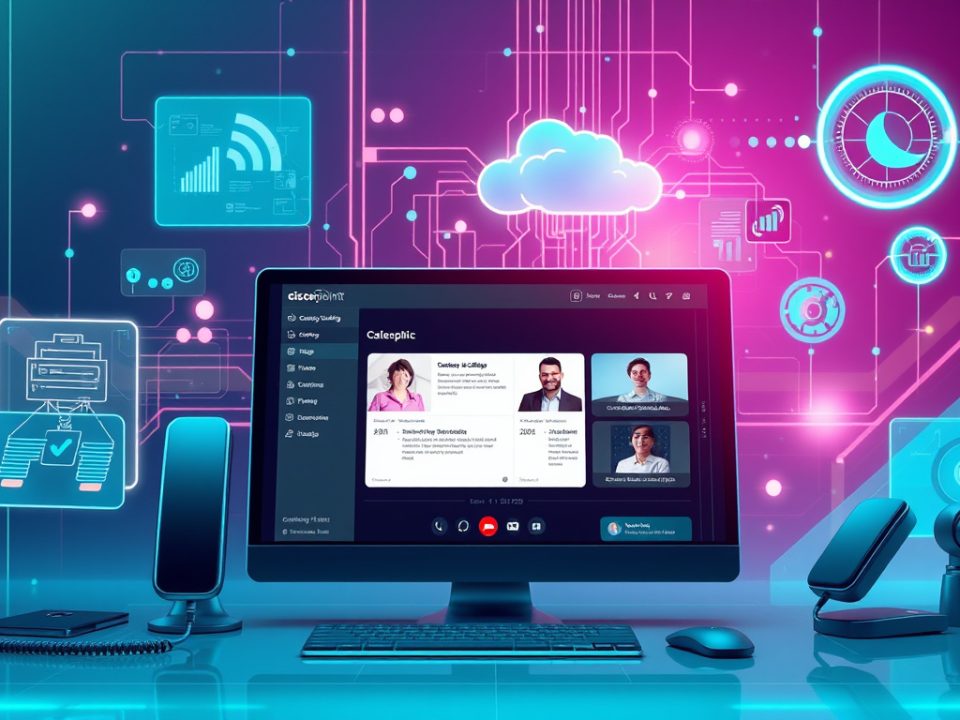
Mastering STUN: The Essential Guide to Navigating NAT Traversal for Seamless Communication
March 24, 2025
Unlocking the Future of Communication: How VoIP Trunking Transforms Business Connectivity
March 24, 2025Communication relies on technology. Today, enhanced systems drive clarity. Echo cancellation technology stands as a pillar; it links microphones with speakers and data with algorithms. This article details echo cancellation. It explains operation and role. It improves voice quality. Telephony and video calls demand such precision.

Understanding Echo
Echo remains a reflected sound. A speaker speaks; a microphone captures; a loudspeaker repeats. Two echoes emerge.
- Acoustic Echo
Sound from the loudspeaker reaches the microphone. The delay creates feedback.
Speaker → sound; microphone ← capture; delay → echo. - Line Echo
Electrical signals travel. Impedance mismatches cause signal reflections.
Network mismatches → reflection; reflection → line echo.
Two systems counter issues. One is for Acoustic Echo Cancellers (AEC); one is for Line Echo Cancellers (LEC).
How Echo Cancellation Works
Echo cancellation uses algorithms; it employs digital signal processing. The goal is clear sound. Unwanted echoes vanish. The process links detection and cancellation in a tight bond.
The Process:
- Detection
The system monitors audio. Input and output link closely. It detects echoes. - Estimation and Subtraction
On echo detection, an adaptive filter forms a model. The echo model subtracts from the incoming signal. Model → subtraction; subtraction → cancellation. - Real-Time Adaptation
Acoustic environments shift. The system adapts: microphone position, speaker volume, ambient noise. Real-time adjustments tweak filter parameters. Adjustments → convergence; convergence → natural flow.
Reduction exceeds 50 dB. Convergence occurs within 200 milliseconds. Short delays maintain conversation fluidity.
Applications of Echo Cancellation Technology
Echo cancellation is indispensable. It works in multiple domains.
- Telecommunications
Voice links need clear paths; mobile and landline depend on these links. - VoIP Services
Internet calls face latency; echo may worsen. Echo cancellation mitigates such delay. - Call Centers
Agents and customers share dialogue. Clear audio boosts understanding. Echo reduction reduces distractions and background noise. - Video Conferencing
Participants engage. Echo-free sound builds immersion. Remote work benefits from seamless audio links.
Importance in Call Centers
Call centers need clarity. Echo disrupts flow. It causes frustration in agents and customers. AEC holds the line. Conversations stay clear. Service quality advances.
Preventing Echo in Home and Office Settings
Technology pairs with simple measures for echo reduction.
- Use of Headphones
Headphones limit acoustic overlap. The microphone stays isolated from speakers. - Volume Control
Moderate volume prevents overreach. Speakers push little sound; microphones capture less. - Room Design
Physical space matters. Carpets, soft furniture absorb sound. Hard surfaces invite echoes.
The Future of Echo Cancellation Technology
Advancements continue progress. Echo cancellation systems evolve. Fullband AEC enters professional realms. Multisource strategies address complex arrangements. Multiple microphones and speakers form networks.
Voice-activated devices and Automatic Speech Recognition (ASR) thrive. They need refined echo cancellation. Echo-free speech uplifts recognition accuracy.
Conclusion
Echo cancellation technology acts as a core component. It links algorithms to real-time responses. It maintains clarity and fluidity. Personal and professional dialogue benefits. Conversations become smooth; communication improves. As applications expand and technology deepens, echo cancellation grows in importance. Communication now stands clearer than ever.
NextPointe is a Boutique Business VoIP Service Provider based in South Florida. We offer our services in Miami, Broward, West Palm Beach, the Caribbean, and the rest of the country. Why do we provide a better solution than other hosted VoIP competitors? First, our platform is based on the Cisco Unified Call Manager; this is the platform of choice of most Fortune 500 companies; our customers are getting a mature, reliable, and feature-rich platform. Most providers use a generic open-source-based soft-switch mainly focused on a multi-tenant portal and supports various IP Phones. Second, we only offer Cisco IP Phones with our service that are designed and tested to work with the Cisco Unified Call Manager, meaning we will have very few compatibility issues and a ton of telephony features compared to our competitors who want to support any phone brand in the market; plus Cisco IP Phones are vastly superior in quality compared to any competitor at about the same price. And last but not least, we offer tailored support to our customers, think like having a “telecom department” for your organization. This is the most crucial feature of our service; we don’t send you to a generic portal for you to figure out the changes or send you to an outsourced call center in India. You call, email, or IM our team, and we will make the changes for you and take the managing of the Phone Service out of your back so you can focus on your business.




